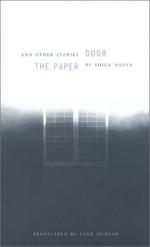|
This section contains 7,694 words (approx. 26 pages at 300 words per page) |

|
SOURCE: "Shiga Naoya: The Hero as Sage," in The Rhetoric of Confession: Shishōsetsu in Early Twentieth-Century Japanese Fiction, University of California Press, 1988, pp. 187-247.
In the following excerpt, Fowler surveys Shiga's novellas, particularly Wakai. He then goes on to contend that Shiga "depopulates " his fiction, showing his main characters in relative isolation in order to better explore the nature of personal experience.
Both the power and the limitations of Shiga's confessional rhetoric are revealed perhaps most plainly in the "Wakai trilogy" (Wakai sanbusaku): Ōtsu Junkichi (Ōtsu Junkichi, 1912), Wakai (Reconciliation, 1917), and Aru otoko, sono one no shi (A certain man and the death of his sister, 1920). It is united loosely by the theme of the hero's troubled relationship with his father. In Ōtsu Junkichi, the first-person narrator (a would-be writer) chronicles his ambivalent feelings toward his friend's sister, his special relationship with his grandmother, who raised him since...
|
This section contains 7,694 words (approx. 26 pages at 300 words per page) |

|


